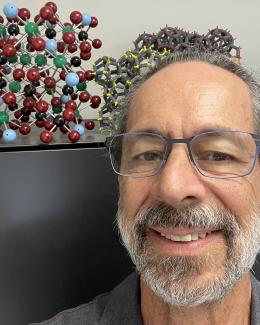Abstract
Six members of a new family of cerium-halide-based
materials with promising scintillation behavior have been synthesized
in single crystal form, and their crystal structures were determined.
S p e c i fi c a l l y , t h e s e n e w c o m p o u n d s a r e
[(CeCl3)7(BuOH)16(H2O)2]·(BuOH)2 (1), (CeBr3)14(BuOH)36
(2), [(CeCl3)7(1-PrOH)16(H2O)2]·(1-PrOH)2 (3), [(CeBr3)7(1-
PrOH)18]·(1-PrOH)2 (4), [(CeCl3)6(iBuOH)15]·(iBuOH)2 (5),
and CeCl3(sec-BuOH)2(H2O) (6). Additionally, the scintillation
ability of compound 1 was established. The structures of these
cerium-halide-based materials consist of catenated tetradecanuclear
rings that arrange themselves into three distinct structural motifs
which contain the largest lanthanide-based ring structures reported
to date; the different motifs are obtained by involving specific
alcohols during synthesis. Specifically, n-butanol and n-propanol lead
to 1-D chains of tetradecanuclear rings, and iso-butanol leads to 2-D parquet-patterned sheets of rectangular tetradecanuclear
rings, while sec-butanol results in a zigzag 1-D chain structure. One of the compounds, [(CeCl3)6(iBuOH)15]·(iBuOH)2, has
been shown to scintillate with a light yield of up to 1920 photons/MeV, and due to the presence of protons, it should be capable
of detecting high energy neutrons without the necessity of prior thermalization. Furthermore, it also appears to be the first
cerium-based compound that scintillates in spite of the fact that water coordinates to two of the Ce(III) centers within the
structure.



